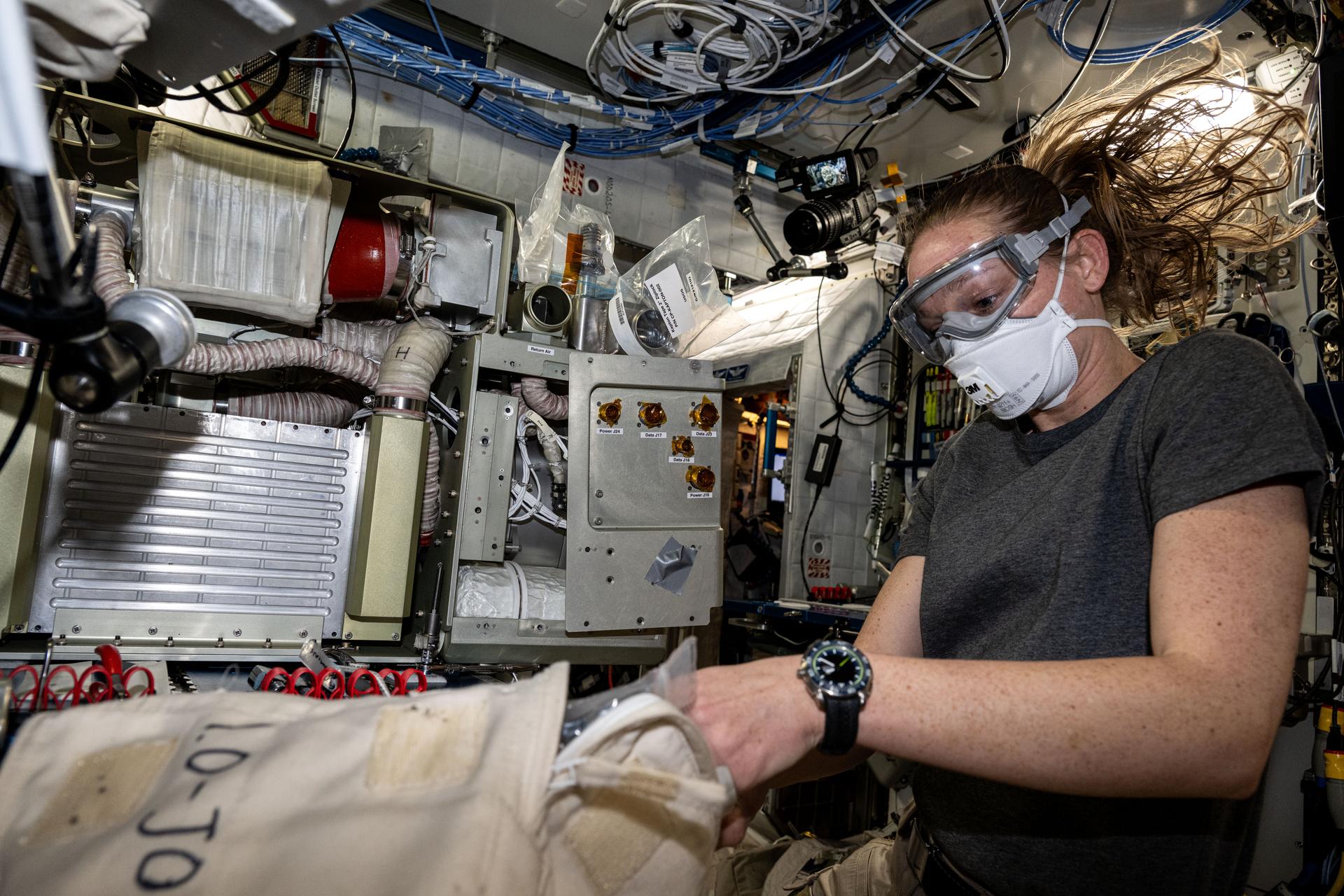Crew Works on Spacesuits, Life Support as Human Research Continues
Spacesuit and life support maintenance were the main focus on Thursday while the Expedition 73 still had time set aside for space biology research aboard the International Space Station.
NASA Flight Engineers Jonny Kim and Anne McClain partnered together throughout Thursday servicing a pair of spacesuits in the Quest airlock. The duo took turns scrubbing cooling loops, installing components that clean suits, and checking out the suits’ radio gear. The pair wrapped up the suit maintenance at the end of the day uninstalling the cleaning gear and stowing the equipment in Quest.
Before the spacesuit work, Kim began his day collecting his blood and urine samples for processing, cold stowage, and later analysis as part of the CIPHER suite of 14 human research investigations. Next, he took a cognition test, also a part of CIPHER, measuring his mental adaptation to living in space. McClain powered up the KERMIT fluorescence microscope and installed a test sample slide so ground controllers could remotely checkout the operations of the state-of-the-art imaging device.
NASA Flight Engineer Nichole Ayers spent her shift inside the Destiny laboratory module replacing and cleaning components on the oxygen generation system. She also swapped out an advanced hydrogen sensor being tested for its ability last longer than previous sensors in the oxygen generator.
Station Commander Takuya Onishi kicked off his day swabbing his body and stowing the samples in a science freezer for later analysis. Onishi then set up a 3D imaging microscope, also known as the Extant Life Volumetric Imaging System, or ELVIS, in the Kibo laboratory module to view samples of deep-sea bacteria. The advanced imaging device could be used to monitor water quality, detect potentially infectious organisms, and study liquid mixtures and microorganisms in space and on Earth.
Three-time space station visitor Sergey Ryzhikov of Roscosmos worked on a pair of different experiments exploring physics and biology. He first synced up hardware that measures neutron radiation from sources such as solar flares and how it impacts crew members. Next, he attached sensors to his arm and hands and measured his blood pressure to understand how microgravity affects blood flow to the extremities.
Roscosmos Flight Engineer Alexey Zubritsky wrapped up an Earth observation session stowing imaging hardware and downlinking photographs of landmarks across the Pacific Ocean. Cosmonaut Kirill Peskov spent his shift inside the Nauka science module replacing orbital plumbing gear and cleaning ventilation hardware.
Learn more about station activities by following the space station blog, @space_station and @ISS_Research on X, as well as the ISS Facebook and ISS Instagram accounts.
Get the latest from NASA delivered every week. Subscribe here.

























